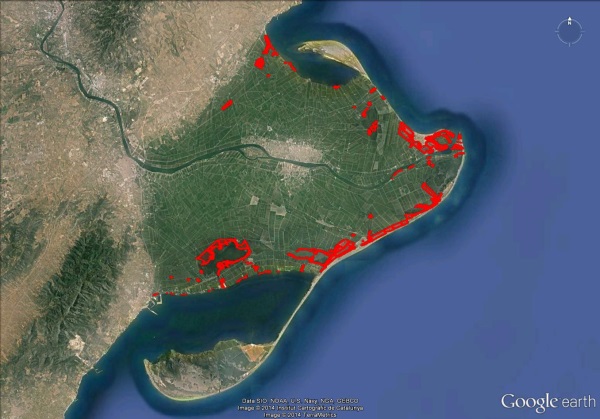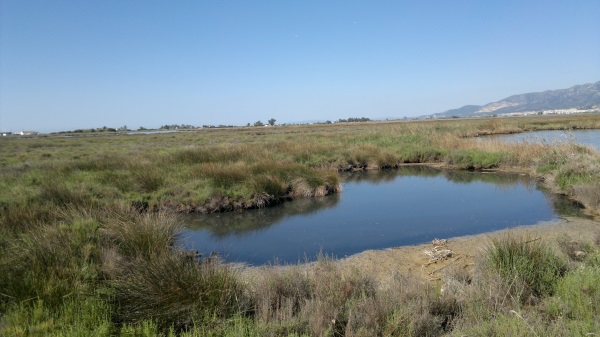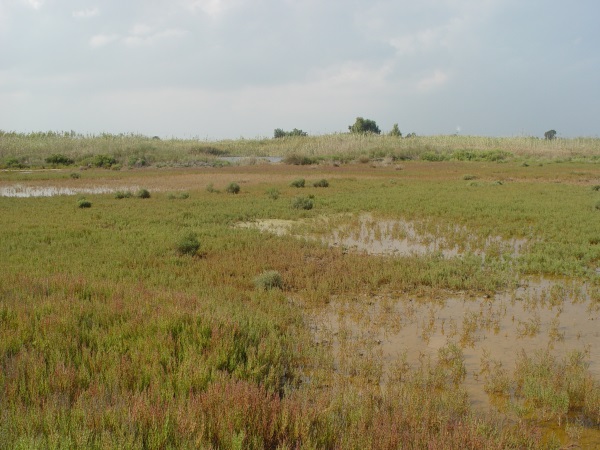
This section includes all the natural areas of the Ebro Delta, which are mostly located on its periphery, totaling approximately 7,700 ha.
These spaces, made up of sandy areas, trans-beaches, lagoons and wetlands, present a very important fragmentation, both in terms of their location on the deltaic surface and their size. Thus we have spaces that do not extend beyond a few hundred square meters to others that occupy a hundred hectares.

Most of these spaces, since 1983 when the figure of Natural Park was created, are under the tutelage of this body.
The ecological richness of these spaces is evident for the biocenosis that it houses, both in terms of plant and animal occupation. Being a reflection of the original occupation of most of the delta plain.
The vegetal occupation of these spaces is nothing more than a reflection of the hydrological and physicochemical conditions to which they are subjected. Thus, the presence of soils, reed beds, reed beds or grass meadows, show us, as an ecological indicator, the salinity of the substrate, as well as the water regime and its chemical characteristics (salty or sweet).

This is a key element when it comes to typifying larval foci, since the presence of water and its temporality, as well as its chemical characteristics, will limit the development of one or another species of mosquito. Thus, the recognition of the plant population is one of the tools used to make the thematic cartography, which allows developing the larval control of culicide populations.
Like the rest of living beings, mosquitoes have undergone an evolution that has led them to segregate in space, each species occupying an ecological niche appropriate to its characteristics.
Most of these coastal areas have very marked characteristics of temporary water regime, which together with a brackish substrate make them the ideal place for the development of mosquito species of G. Ochlerotatus.
The G. Ochlerotatus and more specifically the Ochlerotatus caspius as the most characteristic species, are the quintessential inhabitants of these spaces. An in-depth study of its life cycle shows us why:
- Very fast development, 3-4 days to complete its larval cycle, since the presence of water and its permanence, an essential element, is not always guaranteed.
- Very fluctuating environment that also conditions the presence of possible predators, if the environment consolidates and they appear, the cycle is usually completed.
- Physical characteristics of the larva that allow it to live in waters with high salt content.
- Great aggressiveness on the part of the adults towards the mammals, unlike other mosquitoes, these present a diurnal biting activity.
- Adult mosquitoes, very resistant to climatic conditions, take advantage of the wind currents to move their activity away from their breeding places (at times when important larvae hatch, they make their presence known throughout the deltaic plain and its surroundings).
- Unique ability to deposit the eggs in a humid substrate and not on the water like the rest of mosquitoes. This characteristic is nothing more than an adaptive phenomenon forced by the hydric temporality of their breeding places.
- The eggs have a cover that isolates them from dry conditions and makes them remain viable even for several years.
Taking these characteristics into account, it is understood that population control of this species, up to tolerable limits, is one of the priority objectives of COPATE.
The influence of excessive populations of this species on tourist infrastructures and towns, many of them built near their larval foci, was the trigger for the creation of CODE (now COPATE).
At present, COPATE, thanks to a greater budget contribution (incorporation of the Generalitat of Catalonia), has been in a position since 2000 to address most of the spaces that were previously unapproachable.
In this sense, we must highlight the great joint work carried out by the technicians of the Natural Park and the COPATE, which has led us to develop the larval control of mosquito populations in almost the entire delta surface. Currently, only the integral reserve of Punta de la Banya is excluded.
These joint planning, supervision and control tasks lead us to a very interesting management model that will surely be a model to be followed by other areas with similar characteristics and problems.



